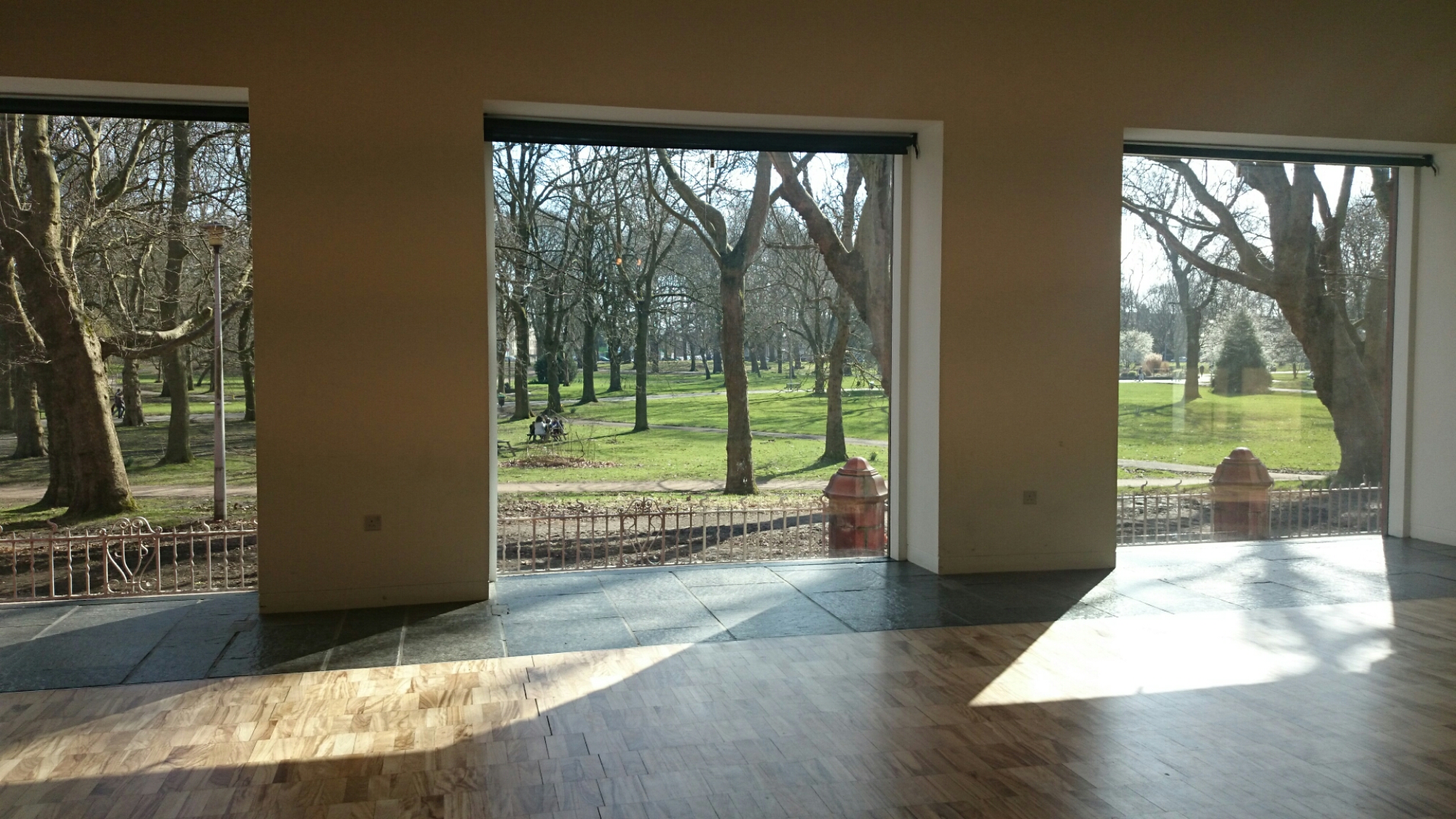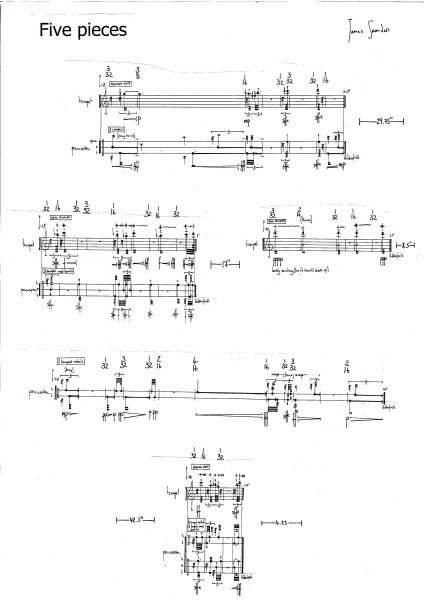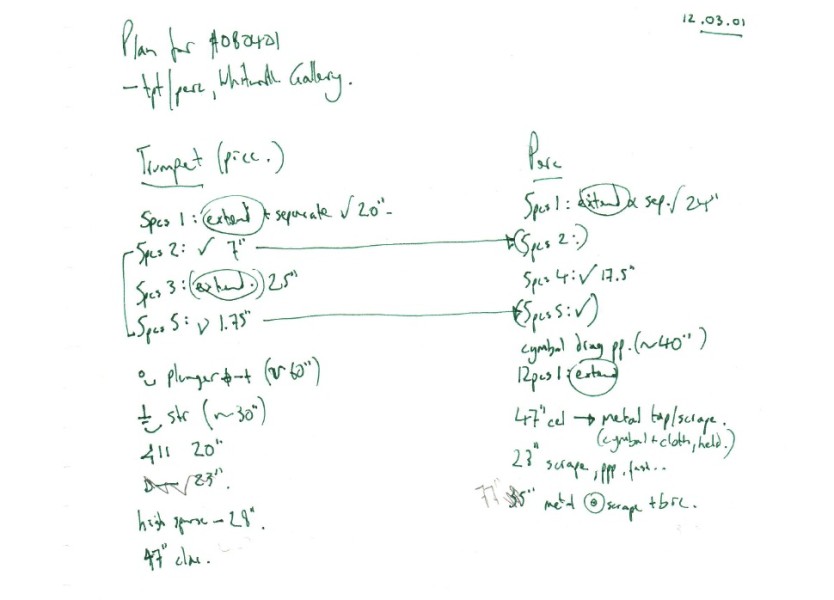One of the most satisfying aspects of working on #[unassigned] was the opportunity it gave me to work on new pieces for friends on a regular basis. The first of these was #080401 for Steve Altoft in his duo with Lee Ferguson, duo Contour. Steve and I studied together as undergrads in Huddersfield in the early 90s, and we shared a flat right through to the end of our postgrad courses. So I got to know his trumpet playing very well over this time. Steve formed duo Contour with Lee after they met at Darmstadt in 1998, and I’d made a few pieces for them before #[unassigned] and really enjoyed working with them. Lee also played percussion in #180700, the first version of #[unassigned]. So the opportunity to make a version for them for performance at the Whitworth Gallery in Manchester was a good one.
#080401 draws on a piece from 2000, Five pieces, also written for duo Contour. This was part of the pre-#[unassigned] pieces that gradually evolved into the full modular project, culminating in Twelve pieces / #180700. It was a mix of solo pieces and duos. In #080401 two of the duos from Five pieces are reused with no change, with a further duo being split into two solo lines with some extension. The percussion solo is also used in its original form, and #080401 also has some of the modules that Lee played in #180700. To this material I added some new ideas for trumpet, although some of these modules are variations on previous modules for clarinet and cello. In my notebook on 12.03.01 I marked these translations and the variations from the cello and clarinet modules. For example, ’47” clar’ and ’47” cel’ were variations of a duo module for clarinet and cello from #051000 but with different tempo markings. I’d also started to develop a shorthand for referring to modules in order to remember them, normally using a combination of a code number, duration, text explanation and simple graphic symbol that signified a key characteristic.
By this point, the two different kinds of time windows I was using were pretty much established. Essentially there were two approaches: metric material that had a predetermined length and began at a time chosen by the player between two points (e.g. 8’06”-8’11”); or drones that could be scaled as required and were given timings for their beginning and end points. The variable windows were important as they allowed for some flexibility in the overlay of the solo parts. I wanted to leave some leeway for the players in order to create a more vital kind of interaction. I didn’t want the synchronisation of the modules to be fixed in rehearsals, but rather that the unpredictability of the alignment should create more surprising moments for the performers, and a very different kind of energy in the performance. In this sense, much of the whole #[unassigned] project is a set of parallel solos, regardless of the homogeneity of the overall texture in the later pieces.
Steve and Lee performed the piece at a Sunday morning concert series the Whitworth were running, located in the room with the large windows overlooking the park. The concert was open so that visitors could walk in and out or listen from adjoining rooms. The combination of the music with views past the performers to people outside was lovely. They repeated the piece twice in Germany later in the month as #300501 (in Breisach) and #310501 (in Freiburg). This was essentially the same piece, but the use of time brackets meant that the alignment was different. This was a practical solution I used occasionally when a few performances were scheduled by a group quite close together. The versions were different, although less so than some of the others.



Leave a Reply